Blog
Situating the Digital Commons. A conversation between Ruth Catlow and Tim Waterman
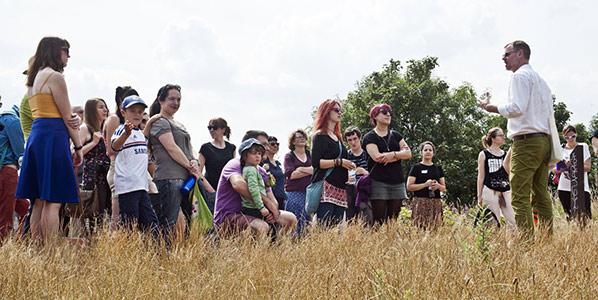
The negotiation of the commons takes place in two distinct realms that are increasingly reaching into and shaping one another:…
Funding culture- Fire! Fire!

Last week I attended the NESTA Rethinking Parks event here in London.
Abandon Normal Devices and Metal took the day by storm. Their projects were surprising, provocative and moving and have grown out of extended periods of experimentation with artists. This is the kind of work that points to future art forms and experiences for as yet unformed audiences. Both organisations are funded by Arts Council England as National Portfolio Organisations.
Also present were a number of companies and people offering new systems and approaches for place-based mobile donations and crowd funding for parks and culture. These are offered as an antidote to “austerity”, to provide alternatives to public funding. They appear to raise more money when they promise novelty but within established forms. They are also shown to have most success when they are able to harness a moment of emotional intensity. And so the fire at Battersea Arts Centre is described as a unique fundraising opportunity.
With the ever-present threat of cuts to public subsidies, the elements of the cultural ecology under most stress are, on the one hand, those that support the maintenance of valued public infrastructures like parks, and on the other, the kind of artistic experimentation that cannot be preceded by a business or marketing plan because it cannot yet be described or storified, and because the audience does not yet exist. If Tim Berners Lee had had to justify his invention of the hyperlink with a business case, or in terms of a “brilliant idea” for diverse audiences we would not have the world wide web.
Back in 2009 Marc Garrett and I wrote about Feral Trade Cafe an exhibition that was also a working cafe, by Kate Rich. It served edible goods, traded across social networks, and was visited by traditional arts audiences, alongside long distance truck drivers (delivering raw materials to our neighbouring warehouses) and local residents, including the growing community of artists and musicians in Haringey at the time. Rich’s artist-crafted database made visible the politics and social relations at play across the international network of distributors and couriers. “While the work is not a design, formula or practical, alternative business model (either for an artwork or a café) for mass adoption, it can be considered an ecological system for ‘mass diffusion of intellect'” [1] This last phrase came via Michel Bauwens at the P2P Foundation, who continues to promote commons culture in the network age as a way to engage people in different ways of sensing, operating and valuing the world.
Organisations and groups with the ability to nurture practices and outcomes that reach beyond established and (as yet) marketable forms, return great value to the public by offering joyfully grounded experiences that allow new ways of thinking, feeling (and so acting) to emerge for different kinds of people. In this way they generate diverse and lively ecologies of new ideas, occupations and values that are crucial to democratic, social and material renewal.
It works against the interests of arts, and cultural and social innovation to have to constantly be calling “Fire! Fire!” in order to sustain this work.
[1] see here Do It With Others – No Ecology Without Social Ecology
Transhumanists and Vampires
My friend David has become interested in Transhumanism – especially its quest to stall the aging process and to allow individuals to achieve immortality.
He told me that, at a recent party of the Transhumanist Party, doubt about the imminence of future immortality for humans was regarded as a great joke. I responded with an off the cuff remark about vampires. He asked me about it in an email and this is what I said…
Vampires are undead, living for ever, feeding on the life-essence of living creatures.
Transhumanists focus on how immortality could be achieved through technological enhancement or manipulation of human biology. The body is envisaged as a vehicle for, or obstacle to, the particular individual’s eternal will-to-power.
Less attention or thought is given to evolution of societal, psychological or ecological systems, were such ‘advances’ to be made available to all humans. Unless we ban birth, these would have to be coupled with a plan for a massive programme of space travel and interplanetary colonisation, to avoid a concomittant clogging up of the earth with aging human souls. (It turns out that space travel is one strand of the Transhumanist project that I wasn’t aware of).
Bram Stoker’s vampires are descended from violent overlords who feed on the life-blood of the local peasants (until they travel to Whitby to feast on the English middle classes).
The Transhuman vision is emerging from the centres of Western (and mainly white and male) knowledge and power. It hardly considers the potential cost to the mass of human and other life-forms and is necessarily a vision for the birth of a new hyper-elite (think Count Dracula and vampire descendents) whose survival is prioritised over all others.
This transhuman/vampire outlives their family, generations of human lovers and friends (while they can still be bothered with humans)- the transhuman may outlive their body. Human temporality and spatiality becomes alien to them- the passing of the seasons, human love, everything but the hungry, survival of the individual becomes irrelevant.
100 Women of P2P: Interview
I am honoured to be included in this list of 100 Women Who Are Co-Creating the P2P Society, a collaboration of Penny Travlou, Stacco Troncoso and Michel Bauwens, at the Foundation for Peer to Peer Alternatives (now open to larger input).
Earlier this month I was interviewed by Penny Travlou for the project here.
Penny Travlou: Dear Ruth, tell us something about your general background and what Furtherfield is about?
Ruth Catlow: In the mid-90s, the web changed for ever what it meant to be an artist. Before that I worked as a sculptor, on my own in my studio, to make objects that sat in designated art spaces, or homes. People could walk around them in galleries, sometimes touch them, understand their scale in relation to their own bodily scale. If I wanted to live as a sculptor I would need to work with an agent or gallery, to circulate work, to get it out of my studio. This was more true of sculpture even than painting because they took up so much space. In the the London Brit Art scene that took off at the same time, the agencies, galleries and media for circulating and promoting art, determined the relationship between the viewer/audience and art experience in a way that restricted what it was possible to do- and who could access it. The art market framed the work.
Around this time New York artist duo MTTA famously made ‘A Simple Net Art Diagram’ in which a lightning bolt strikes in the space between two computers with the header ‘The Art Happens Here’. The computers stood in for people. The art happens between people. The network, taken as a medium and context for art, pointed to the relationship between those creating, viewing, appreciating and questioning art as the focus for attention (in a way suggested by the intermedia approaches of Fluxus artists in the 70s). It connected people across different localities. It’s users made software (instructions, protocols and tools), and files and network content available for circulation and remix as artistic materials in a whole new way. They built platforms and systems for sharing and exchanging these on their own terms.
I met Marc Garrett, an artist with a background in street art, bulletin boards and pirate radio in Bristol. Backspace, an early London cybercafe provided the inspiration for loosely organised, free artistic experimentation. It’s hard to imagine now, in the age of web2.0 (where the major web platforms are provided to offer a smooth exchange, to facilitate commercial interests) the thrill of creating new platforms for art to engage different kinds of people according to artistic intent; where the platform or artware conciously crafted particular social relations.[1] These things, connected with cultures of openness and freedom in the world of software and engineering, and took the focus away from the idea of the individual genius artist, connecting us back with contemporary social and political contexts.[2]
Furtherfield grew out of this context and is an online community, gallery and lab space for arts technology and social change. This video, created by Orlagh Woods by Artquest gives a pretty full description of what we are doing at the moment and why.
Our mission now is to work with extraordinary artists, techies and activists – locally, nationally and internationally; to develop experimental spaces, platforms and programmes; for creative collaboration and peer production of emancipated, thriving communities.
PT: Could you tell us what the Furtherfield Commons is? When did it start? What kind of projects does it involve? How do you link Furtherfield Commons with the nearby local communities?
RC: Furtherfield Commons opened last year in Finsbury Park, North London as a community lab space, for more diverse people to learn more about digital culture; to learn how to work with new technologies on their own terms; to better understand the devices in their hands, on their clothes, in their lines of sight etc; to demystify and open up the black box of technology. Furtherfield Gallery has been based in the heart of the park since 2012 (before this Furtherfield hosted 3-5 exhibitions since 2004 in a warehouse gallery called HTTP). These venues in a metropolitan public space enable us to engage a hyper-diverse public with the work of artists from an international community. Digital culture is changing society: the way we relate to each other; how power flows and politics is done; shaping environmental stresses. And artists help us to feel and evaluate these societal shifts. By presenting the work of artists who focus on these effects, and then talking with audiences and participants, we learn what matters to people and our visitors are often surprised to be addressed in this way by artists.
With Furtherfield Commons we also want to experiment with how a commons might work for an arts and technology led organisation. Discussions of the commons often (unhelpfully) centre around how to manage and share scarce resources – materals, knowledge, praxis – and get stuck on questions of ownership, fairness etc. However for us, at least as an important aspect of the commons, is how, together, we can imagine, devise, maintain and steward, places, infrastructures, systems and communities for a good life for more diverse people and all living things.
When our consumer culture invites us to constantly outsource responsibility for these activities and knowledges, we hope that the events and programmes we host at Furtherfield Commons, in partnership with a network of thoughtful and critical individuals and organsations, will help more people to imagine that a good life is the business of us all.
We link with nearby local communities by connecting with a range of local enthusiasms, interests and needs; working in partnership with educational and criticial technology groups like Fossbox and Codasign we are able to offer accessible activities for young people and those not normally involved with technology. In collaboration with artist and game theorist, Dr Mary Flanagan we have developed Play Your Place, to bring people together to co-create shared visions of their locality through drawing and play. Last year we hosted a series of Class Wargames events inspired by the Situationist Guy Debord’s Game of War. People gathered to play boardgames based on historic battles, in order to learn about and develop revolutionary strategies and tactics from history. We are also developing partnerships with local arts organisations like All Change Arts who have long had their roots in the area, developing extraordinary work with those who might otherwise be excluded from the arts. Last year before the commons opened we worked with Bright Sparks , an electrical recycling and community design enterprise on a co-created, network performance about the impact of e-waste, as part of Helen Varley Jamieson’s We Have A Situation, with 5 European organisations looking at local issues with a global impact. We plan to build on these this year with the upcoming Sex and Security workshops with Fossbox. The Museum of Contemporary Commodities by artist, Paula Crutchlow (Blind Ditch) and cultural geographer Dr Ian Cook (of Followthethings.com) looks at trade justice and how data uses shape our physical spaces and social relations. We are also planning Summer Saturday club for 600 young people and their guardians over the next two years. We will work with partners to devise and share new ways to learn about the principles of programming through artistic concepts and approaches drawing on the ethos of the 70s art school.
We are always interested in new proposals for uses for the space.
PT: Could you please tell us a bit more about your concept DIWO (Do-It-With-Others)? How relevant is it to the ‘commons’ and the ‘peer-to-peer’ values?
RC: We coined the term DIWO – Do It With Others in 2006 to extend the DIY(Do It Yourself) ethos of early net art. This was inspired by punk, in which you used the instruments and bare-bones skills you could muster, to bash out culture on your own terms. DIWO consciously adopted a collaborative approach, using the web as an experimental artistic medium and distribution system to reach people in unusual ways and to foment grass-roots creativity and solidarity.
Applying the principles of earlier Mail Art projects- designed to sidestep artworked gatekeeping and heirarchy – we instigated two E-Mail art projects. “Peers connect, communicate and collaborate, creating controversies, structures and a shared grass roots culture, through both digital online networks and physical environments.”[3]
Participants worked across time zones and geographic and cultural distances with digital images, audio, text, code and software. They created streams of art-data, art-surveillance, instructions and proposals in relay, producing multiple threads and mash-ups. Co-curated using VOIP and webcams the exhibition at HTTP Gallery displayed all contributions in a projected email inbox, alongside an installation of prints of every image, and a running copy of every video and audio file submitted. Every submission was considered an artwork – or part of a larger, collective artwork – for the DIWO project.
From these early events a set of DIWO principles have emerged. It’s DIWO if it:-
- Uses the metaphors, tools, cultures and processes of digital & physical networks.
- Is led by experimental artistic processes rather than utilitarian or theoretical concerns.
- Disrupts traditional hierarchies and concepts of ownership working with decentralized peer 2 peer practices.
- Involves diverse participants (unwitting and active collaborators), ideas and social ecologies.
- Generates unruly and provocative relationships between symbolic meanings and material effects.
- Co-creates the conditions for a more emancipated art context for more and more diverse people.
The DIWO resource here gives more information and links to projects and essays
PT: What is the future vision of Furtherfield? What’s next for the long term?
RC: We have had the good fortune to grow up alongside an international network of individuals and organisations of critical practitioners, thinkers and doers. Our next 3 year programme (of exhibitions, workshops, debates) sets out to properly engage with the social, environmental, financial challenges of our times. We will be actively seeking partners to develop emancipatory cultural infrastructures and projects viable and effective within the Neoliberal context.
Our vision is that through imaginative and critical engagement with practices in art and technology, more and more diverse people strengthen the expressive and democratic potential of our shared techno-social landscape, on their own terms.
Which brings us to the launch of The Netartizens Project. A month of artistic collaboration, exhibition & discussion with 3 flavours of online participation. This runs from March 2 – April 2, 2015 and is a Furtherfield project created in collaobraion with Nick Briz & Joseph Yølk Chiocchi as part of the Art of Networked Practice | Online Symposium.
We invite all artists, scholars, educators, and citizens of the Net to explore, express, and debate the role of the network in our individual and collective practices. Artists are also invited to submit work to the NetArtizens Open Online Exhibition, an evolving showcase of works submitted between March 2 – April 2, 2015. All project activity, questions and issues will be incorporated into the culminating virtual roundtable global exchange.
Questions of environment and economies are going to become crucial. In their introduction to issue #76 of MDC magazine We Grow Money, We Eat Money, We Shit Money, co-editors Shu Lea Cheang and Annick Rivoire write “Money, value, monetary exchange… These concepts have long been excluded from the field of new media, as if the Internet and Net Art were emancipated from these issues, living not on love and fresh water but on silicon and bits, living in a utopia of collective intelligence detached from economic constraints.” I relate to this. It points to a familiar naiveté that is at once, moving, and that is starting to feel inexcusable and unsustainable. MCD #76 provides a survey of theories of finance, and alternative arts inspired currencies (including distributed cryptocurrencies) that demonstrates how this issue is coming to the fore and starting to attract the imaginative and strategic thinking of those, with better minds than mine, who understand how markets and finance work, and who value the role of artists in the ecology of our societies. This is certainly stuff that we are starting to grapple with at Furtherfield. It requires real tenacity and focus as well as an old fashioned sense of trust and solidarity between netartizens.
[1] For instance in 2003 we created with Neil Jenkins, VisitorsStudio; an online place for real-time, multi-user mixing, collaborative creation, many to many dialogue and networked performance and play. This was a social, multilayered space that provided a site for projects such as Dissention Convention in which a collaborative polemic could be simultaneously created, viewed and remixed in different locations around the world.
[2] In 2011 we worked with Rob Myers and Charlotte Frost to produce Collaboration and Freedom – The World of Open Source Art– a collection of artworks, texts and resources about freedom and openness in the arts, in the age of the Internet. Freedom to collaborate – to use, modify and redistribute ideas, artworks, experiences, media and tools. Openness to the ideas and contributions of others, and new ways of organising and making decisions together. This was commissioned by Arts Council England and is mirrored at the Foundation for P2P Alternatives
The Internet Is Here
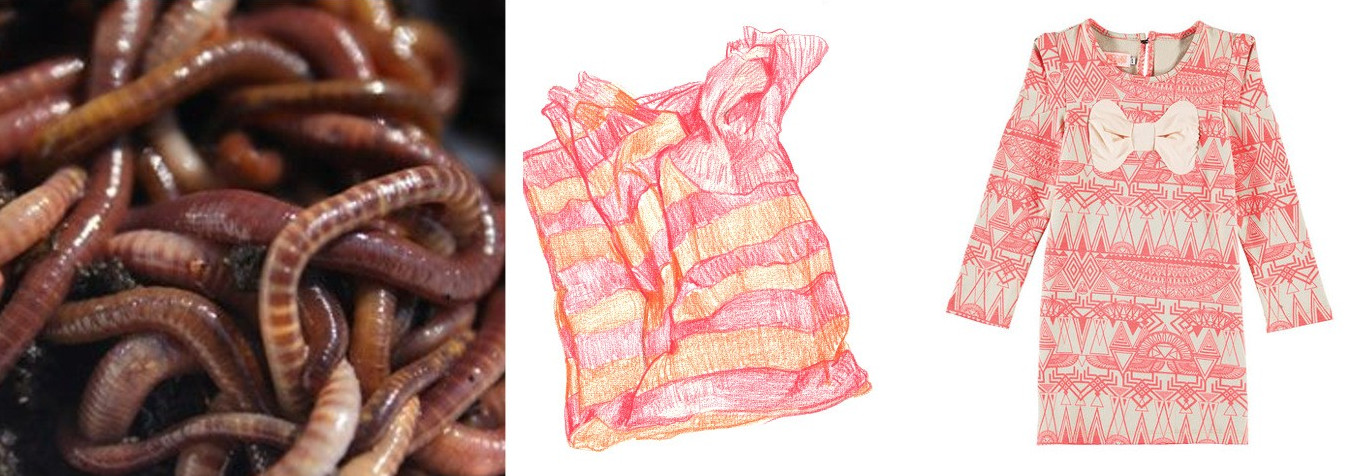
The Internet is Here: Warms
The Internet is disappearing – from our screens into our stuff.
To try to think about it I have created 9 triptychs. A small start.
The central image is always a drawing made from observation of a thing I own, (including 2 drawings of screen shots of video calls (which are now a feature of my daily life)).
The left and right hand images are the results of two searches made using Google on 17th March 2015.
- On the left is an image which is the result of a word search, based on an action ascribed to the thing drawn. This word is also the title of each triptych e.g. the first triptych is called ‘Warms’ because a my jumper warms me.
- The right hand image is the result of a search using Google’s image matching function. You upload an image and it finds images that are visually similar.
And I am thinking harder now about what it will mean for art that we can now make so many different kinds of “things” act as the collection point for different kinds of sense data- heat, pressure, acceleration, radiation, tilt, sound, light, electric charge etc- and then use those same devices to redistribute the data in newly wrangled (as yet unknown) forms.
This emerging “Internet of Things” underpins torrents of rhetoric (from politicians, big-business and entrepreneurland) about all manner of things which are getting “smarter” as a result of these developments: homes, cities, shopping.
I’m interested in how they might also help people, communities, organisations, institutions to get smarter. And whether smarter is the right priority. Perhaps we need our homes, cities and shopping to be more equitable, loving, critical, philosophical, cooperative and wise.
Digital Arts Marketing or Digital Arts Marketing?
I wrote this blog post to mark the end of my fellowship with the CultureHive Digital Marketing Academy. You can find out more about the project here.
It has been hard to talk about this fellowship to my friends and peers in digital arts (also called media arts, new media arts, networked arts) because of a long-standing, but under-explored, antagonism between digital arts and marketing.
What do we prioritize when we talk about Digital Arts Marketing?:
1) Enabling more diverse people to access, co-create and appreciate artforms that take digital culture as their tools, subject and medium?
or
2) Deploying existing digital and social media to grow audiences and so increase the income for all existing artforms?
First to digital arts.
For over 30 years artists have been inventing and experimenting with new networked artforms that critique and extend the expressive and social effects of digital technologies. Artistic and technological developments influence each other. Since our computers shrunk many of us now carry with us devices that comprise an array of tools for communication, data sensing and capture. They are also portable entertainment systems with streaming media or games. They also enable us to participate in a hundred conversations at once. These devices are in our hands or our pockets, or our glasses; or we lie them on our pillows at night. Soon they will be inside of us, (or buzzing over our heads) and inside of every object in our houses and our streets, and these data points will be talking to each other. Our devices already have the capacity to draw data from our every movement, and every interaction, and algorithms wrangle this data and push it out again to shape our media, our culture and the physical world.
First Experiences of Reading
Last week Edward Picot asked “What are your first/most formative memories of reading and encountering books? Was it in a library, a bookshop, or exploring the bookshelves at home? http://edwardpicot.com/blog/first-experiences-of-reading/.
He was first inspired by Code Poet Mez’s autobiographical account of early reading- which is quoted on the website.
I wrote: In the effort to remember my early reading experiences, I instead remember smells of places: the damp of my grandparents house in Clitheroe, the classroom in my primary school, the camper van in Devon. I can’t remember learning to read or write. I was read to a lot as a child, I love my parents for that. Such a variety – Spike Milligan, Lewis Carol poems and songs. Astrid Lindgren, Joan Aitken, Alan Garner. I also recall my younger brother (who had a strong sense of pathos) reciting from the book of Mother Goose Nursery Rhymes, with a forlorn look on his face. Later we went on long camping holidays and we would be read to in the evenings: Ursula Le Guin’s Earthsea Trilogy. Tolkein.These are some of the books I remember. What I know, is that I learned to read with books designed for the purpose: Janet and John; Topsy and Tim; the ladybird books of fairy stories.
I’m not very good at reading words off the page/screen and I’m a horrible speller. I am a pretty good listener though. Recently I signed up to an audio book club – and find I can “read” all sorts of things I had previously struggled to attend to. Last year I “read” Marx’s The Communist Manifesto for the first time, on the treadmill at the gym, and Emma Goldman’s On Anarchy, while driving 3 times a week to a particularly un-free workplace. Moving my body and eyes as I “read” audio books liberates me to make more connections, to comprehend the layers of meaning and tone.
Digital Culture : three events and a video
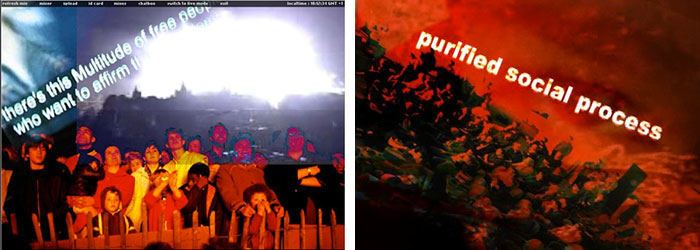
A busy couple of weeks ahead. Here are details of three (imminent) media arts events and a video about Furtherfield…
Play the Web We Want – 4 new games!
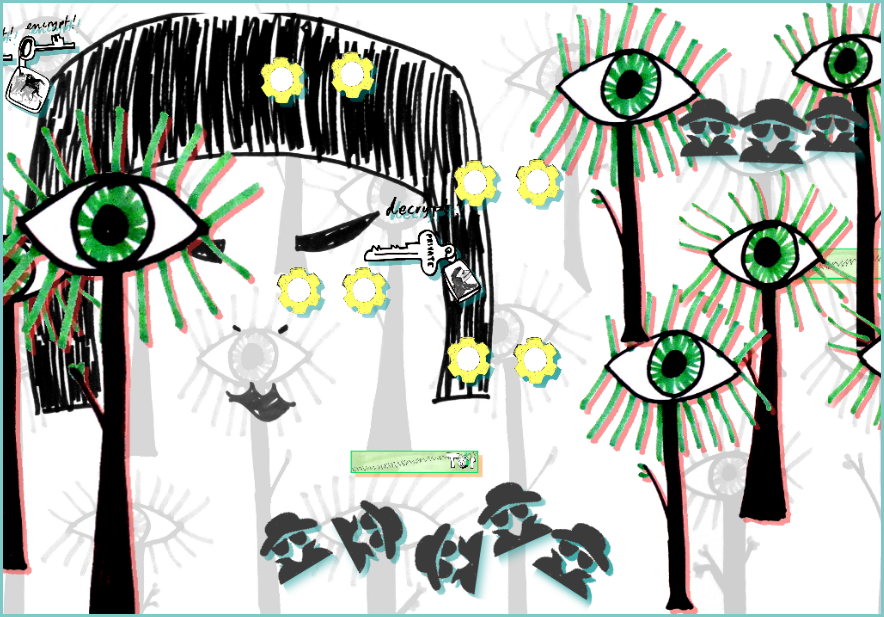
More than 150 people made drawings to generate a collective vision for a better networked society View images of people…
Web We Want Festival – Play the Web We Want!
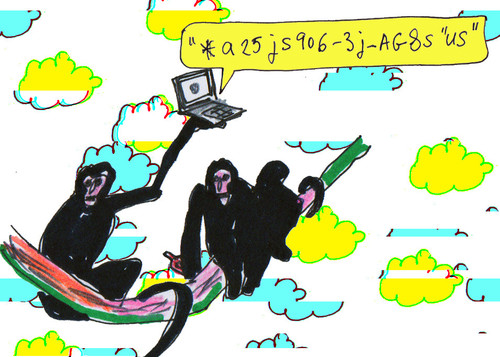
Reblogged from an original post for the Southbank Centre, in advance of the November 2014 Web We Want Festival about…

Recent Comments